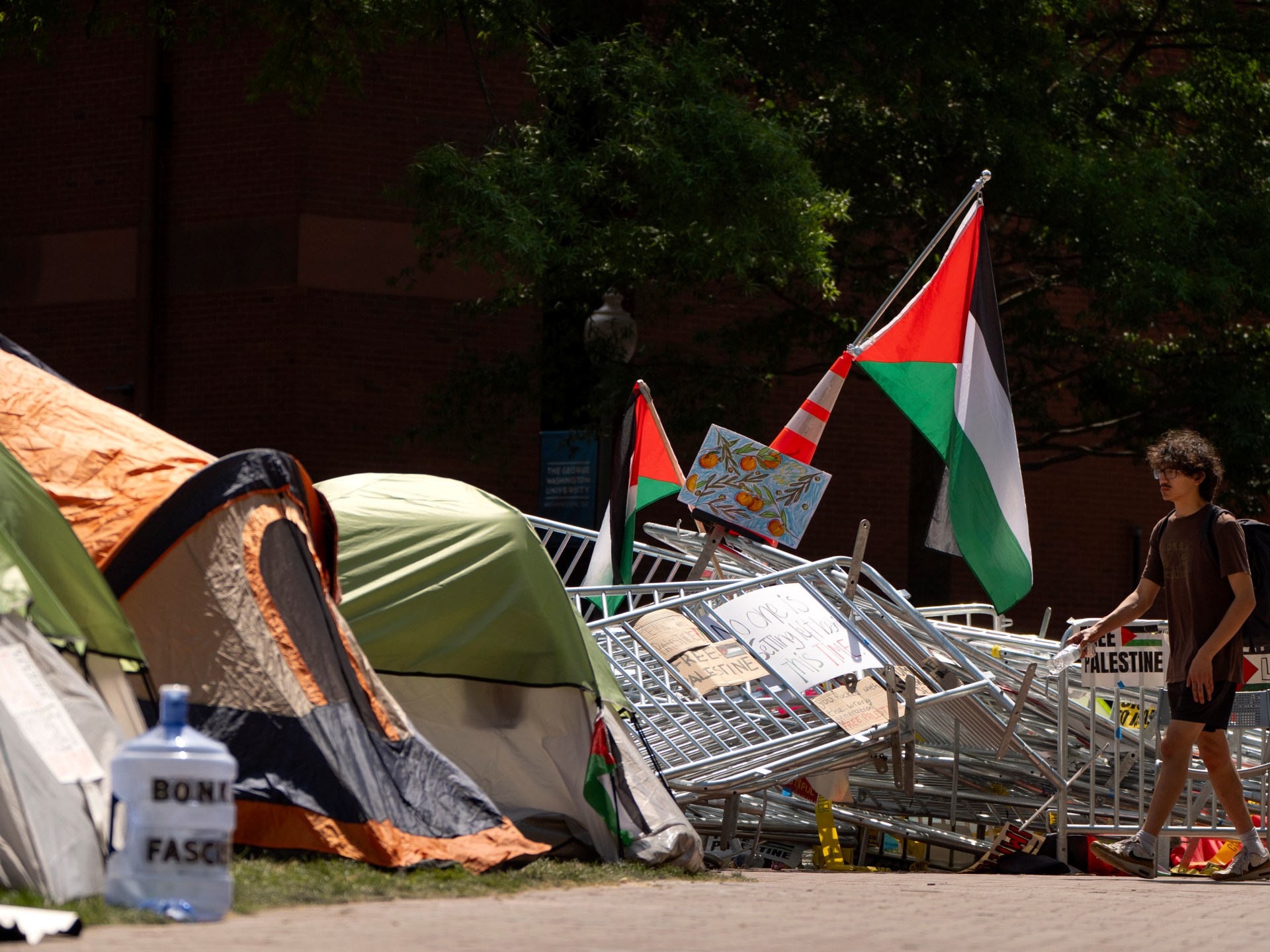
How a Gaza protest at Indiana University became a battle for free speech
Al Jazeera
Police crackdowns on nonviolent campus protests have raised questions about student rights and administrators’ biases.
The sun was casting shadows onto the green grass of Dunn Meadow at Indiana University Bloomington, as a line of police carrying batons and shields moved forward.
Across from the police stood a daisy chain of protesters, their arms linked in front of a newly established pro-Palestine encampment. The cluster of tents resembled dozens of other encampments set up at universities across the United States in recent weeks, as demonstrations against Israel’s war in Gaza reached a fever pitch.
College campuses in the US have long been bastions of academic freedom and political protest, and Indiana University was no exception. For 55 years, Dunn Meadow had been its designated “assembly ground”, an area the university itself described as a “public forum for expression on all subjects”.
But that changed on April 24, as university administrators swiftly revised policies that had been on the books since 1969.
While the university had previously allowed “the use of signs, symbols or structures” for protests on the meadow, the change banned temporary structures without prior approval. The very next day, police appeared to dismantle the encampment — and arrest students.











